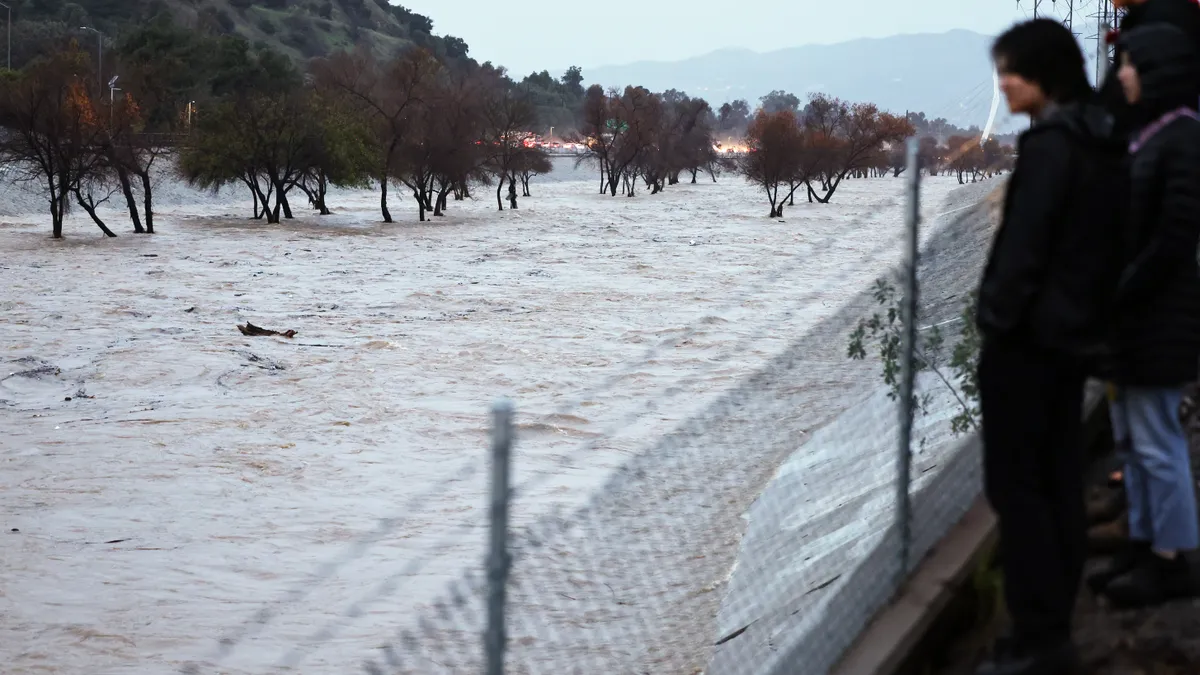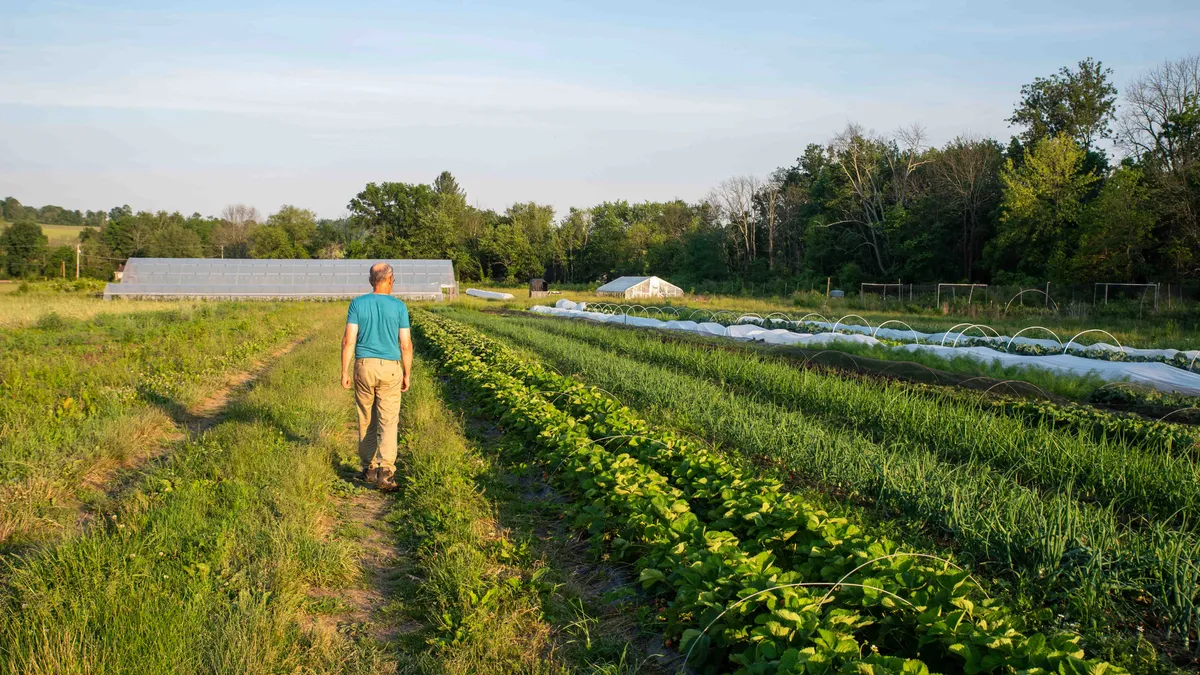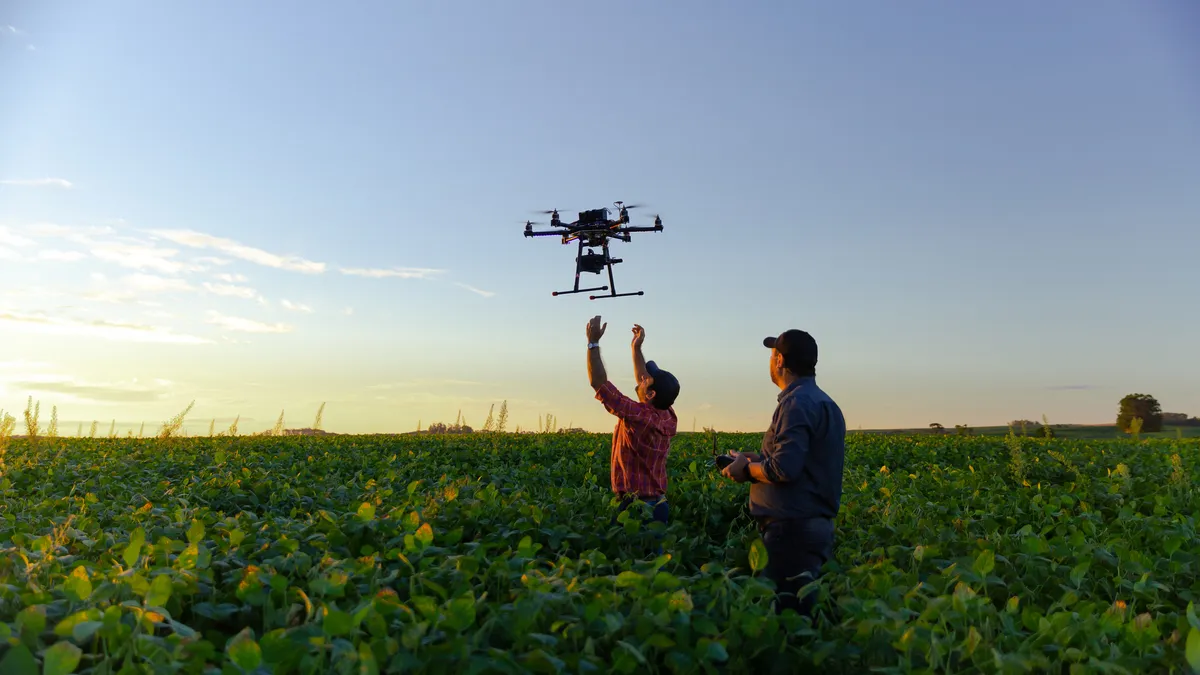After years of drought, El Niño conditions in 2024 should bring more precipitation to a large swath of the U.S., but its effect on food prices remains to be seen.
The central and southern plains and southeastern US will likely see more rain in the late winter and early spring compared to 2023, said Brad Rippey, a meteorologist with the U.S. Department of Agriculture.
He noted how El Niño reached peak intensity in December and the latest update from the Climate Prediction Center of the National Weather Service indicates that El Niño is expected to continue for the next several months.
“With some degree of an El Niño ‘hangover’ expected to persist across the U.S. into the early part of the 2024 growing season,” Rippey said, “we should see the wettest conditions — at least on a national scale — since spring 2019.”
He cautioned that farmers shouldn’t be too ecstatic yet. “Even with the overall wetter U.S. pattern in spring 2024, there could be lingering or developing droughts in the Northwest and possibly across the High Plains,” Rippey said.
Lingering droughts could hurt yields and drive up crop prices, he added.
Still, 2024 is looking to be a rebound year for some agricultural areas. Coming off three La Niña winters that gave rise to drought-heavy conditions in areas such as Kansas, American farmers could see some much-needed crop relief.
Already, droughts are easing. Based on U.S. Drought Monitor statistics, drought coverage in the lower 48 states reached 40% as recently as October 10, 2023, but has most recently dipped to 27%, as of January 23.
Already this month, record rainfall has blanketed swaths of California. Rainfall totals as high as 10 inches or more instigated widespread severe flash flooding and activated more than 400 mudslides within just the greater Los Angeles area. Blame El Niño’s ripple effect, Rippey said.
“These storms were able to tap into deep oceanic moisture associated with the El Niño-driven equatorial Pacific warmth and largely took aim on central and southern California — another hallmark of El Niño — instead of the Pacific Northwest,” he said. “These types of SoCal systems are most common during El Niño in mid- to late-winter.”
The Kansas case
Kansas wheat farmers faced a dismal 2023, as two-thirds of the state’s wheat crop endured extreme or exceptional drought conditions for much of the year. But a turnaround is expected, which began in late December 2023, Rippey said.
The USDA rated Kansas winter wheat as 32% deemed “good to excellent” in November 2023. By January 1, that figure inched up to 43%, Rippey said.
“El Niño often leads to an active storm track across the southern U.S., and during the recent spate of cold, stormy weather, multiple rounds of highly beneficial snow for wheat blanketed areas as far north as the central Great Plains,” he said.
But for some analysts, Kansas wheat has to overcome a long-term challenge that goes beyond six-month outlook forecasts. A study by the Environmental Defense Fund reported that climate change-driven reductions in precipitation and increased groundwater withdrawals will likely cause up to a 25% decrease in groundwater storage for Kansas from 2010 to 2060.
The report also noted that “both summer and winter average temperatures are projected to increase 3-5°F by mid-century.”
Then there’s the Goldilocks dilemma that Kansas and other states face in 2024, said Eileen McLellan, lead senior scientist at the Environmental Defense Fund.
“As heartening as it is to hear about increased precipitation for Kansas, it could be a challenge for farmers because they need the rain to be like the Goldilocks porridge — some water, but not too much. If crop areas get too wet, flooding can make it difficult for farmers to even access the wheat,” she said.
El Niño and food prices
With weather conditions set to normalize later this year, crop production may not face any seismic shifts, experts say, but if extreme weather conditions persist, yields and also food prices could be unstable.
“From the winter wheat perspective, we tend to see less freeze damage and winterkill-related issues during mild winters," Rippey said. "But even brief cold snaps can harm wheat, especially in the spring, after the crop has broken dormancy, and, especially when a protective snow cover is not present."
Even when El Niño conditions bring about crop failures, those effects on food prices can be hard to untangle on a global scale. Other factors may be at play.
El Niño-induced crop failures, for example, can be offset by production in other key wheat-producing regions, McLellan said. “Some countries manage those failures via trade, too, and what we’re recommending to some wheat farmers is to consider alternate crops such as millet that grow better in dry conditions.”
What also complicates matters is how difficult it can be to predict yields based on long-range outlooks.
“It’s tough, if not impossible, to take probability forecasts of temperatures and precipitation and translate them into crop production estimates,” Rippey said. “Day-to-day weather variability, rather than seasonal forecasts, often has the greatest influence on crop outcomes.”


















